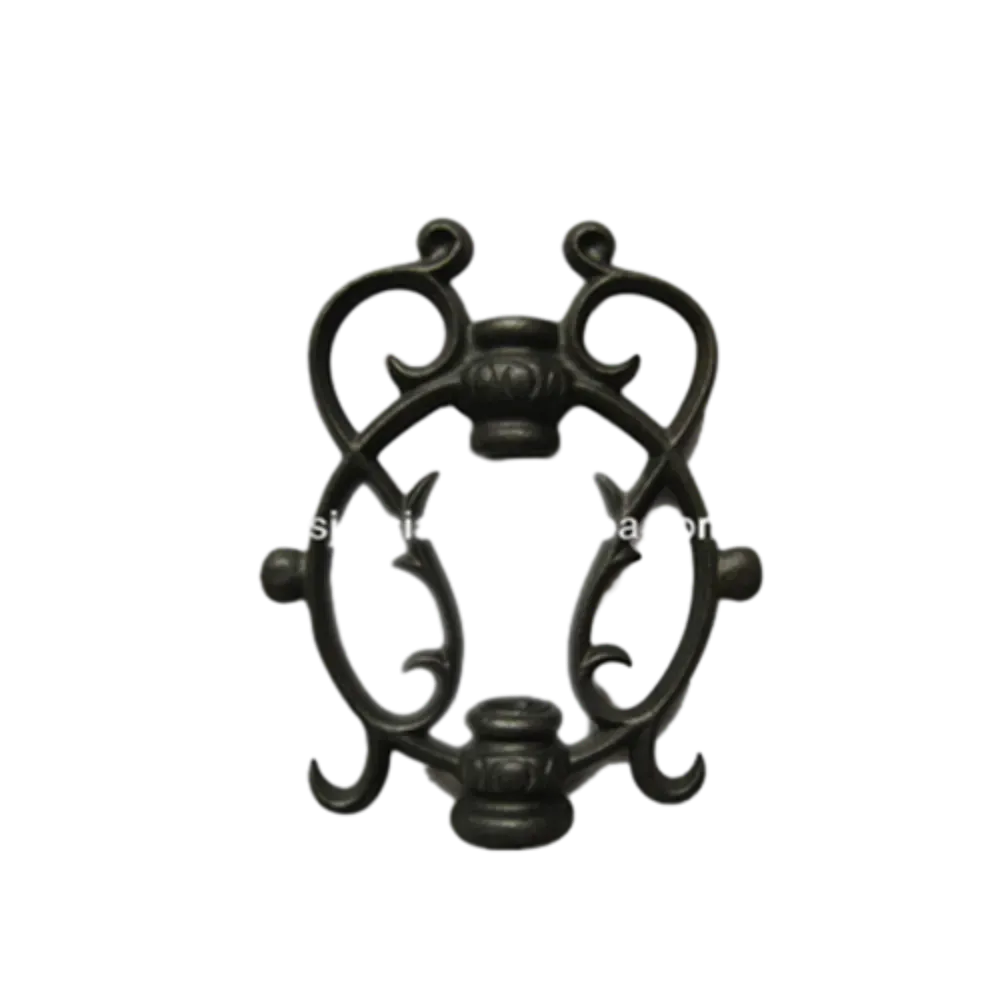Wrought iron and cast iron are often confused as the same metal when they are two completely different materials. Generally speaking, wrought iron is heated and then worked with tools, while cast iron is melted, poured into a mold, and allowed to solidify. Each iron’s given name also suggests the inherent differences between each material. Wrought iron can be interpreted as worked iron, while cast iron describes the casting process in which it’s made.
What is Wrought Iron?
Wrought iron is a decorative iron product commonly used for ornamental assemblies. Wrought iron is a term used to refer to an alloy that is no longer produced but was preferred by blacksmiths when forging. Genuine wrought iron is not readily available for forge work; pure iron is often used to replace wrought iron in restoration work. Otherwise, simple wrought iron is usually salvaged from old bridges and structures. Present-day wrought iron is manufactured with a combination of cast and forged components.What are the Advantages of Wrought Iron?
Wrought iron is a highly malleable metal that can be heated and reheated to create a wide range of shapes. A significant advantage that wrought iron provides is its strength increases the more it is worked. Wrought iron also contains less carbon than cast iron, offering a softer and more easily workable final product. Wrought iron provides the following advantages:- Excellent weldability
- Increased ductility
- Enhanced malleability
- High tensile & compressive strength
- Easily forged
Wrought Iron Applications
Wrought iron is a decorative metal that provides significant benefits for applications that require an aesthetically pleasing look and feel. Wrought iron applications include:- Fences
- Gates
- Railings
- Roof cresting
- Hardware
- Grills
- Canopies
Can Wrought Iron be Welded?
Wrought iron is an iron alloy with a shallow carbon content with fibrous tiered slag inclusions. Wrought Iron bends better than cast iron while maintaining excellent corrosion resistant qualities. Wrought iron is also challenging, malleable, ductile, and easily welded. However, wrought iron’s slag inclusions make obtaining a porosity-free and crack-free weld difficult. Wrought iron welding processes include:- Forge
- Oxyacetylene
- SMAW (stick welding)
What is Cast Iron?
Cast iron is an alloy of iron that contains 2-4% carbon and trace amounts of manganese and silicon and is most commonly associated with gray iron. Cast iron is formed by smelting iron ore and mixing it with scrap metals and other alloys. The liquid mixture is then poured into molds and allowed to cool and solidify. Cast iron is more rigid, more brittle, and less malleable than wrought iron, making it perfect for products with complex shapes.Cast Iron Railing Panel
What are the Advantages of Cast Iron?
Cast iron is a prevalent metal for manufacturing cookware, mechanical engineering devices, and construction products. Cast iron advantages include:- Good casting ability
- Available in large quantities
- Low-cost production
- High compression strength
- Good machinability
- Enhanced anti-vibration properties
- Excellent wear resistance
- Low-stress concentration
- High resistance to deformation
- High durability
Cast Iron Applications
Cast iron is manufactured from premium iron and alloy metals to create a range of robust and durable products with excellent wear resistance. Cast iron applications include:- Cookware
- Fluid pipes
- Automotive parts
- Ship anchors
- Machinery
What are the Differences Between Wrought Iron and Cast Iron?
The main differences between cast iron and wrought iron are their physical properties and manufacturing processes. Wrought iron is manufactured through heating, bending, and working, while cast iron products are released into their appropriate shapes. It is nearly universally agreed that cast iron is more accessible to produce than wrought iron.However, wrought iron is more substantial than cast iron, so it is more likely to be used in commercial applications. Conversely, cast iron is harder than wrought iron and can resist deformation under pressure or stress more quickly than wrought iron.
















